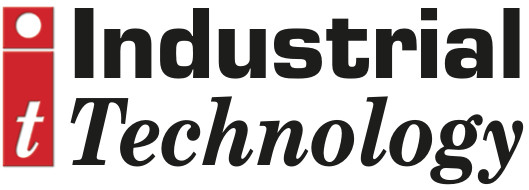
Posted to News on 3rd May 2022, 13:03
Integrating your IT and OT systems

Paul Holding, founder of IT integration provider Ripley Solutions, discusses the importance of creating an integrated IT and OT infrastructure.
When a French theme park wanted to find an easy way to tackle its waste issue, it turned to an unlikely helper. After seeing its crows display their intelligence in a falconry show, park organisers trained six crows to pick up litter in return for a treat.
This unlikely partnership demonstrates how we can solve challenges by bringing two unrelated areas together. Similarly, bringing together separate areas of the manufacturing industry, such as information technology (IT) and operational technology (OT), can help businesses meet changing market demands.
Historically, there was a clear separation between IT and OT – each was managed by separate teams using different systems, so didn’t need to communicate. However, this is no longer the case. As more businesses aim to realise Industry 4.0 and digitalise their operations, they need connected equipment that will enable them to improve resource efficiency, improve operations and remain competitive.
Manufacturing businesses are now looking to integrate the two, investing in more intelligent technologies such as Industrial Internet of Things (IIoT) devices with integrated data communication abilities. These new technologies will enable businesses to collect and analyse data from the factory floor and use it to make more informed decisions that will maximise productivity and minimise downtime. While integration is key to digitalisation, how to effectively bring together two systems that have never interacted before is not always clear.
What if you don’t integrate?
Commonly, the largest barrier to integration is not the technology itself, but the need for teams who have never worked together to start collaborating, sharing data and adapting to new systems. As a result, the first step to successful integration is to encourage cultural change by emphasising the importance and benefits of adopting new systems so that employees understand the wider business benefits.
Improved communication is one of the key benefits of integrating systems. Traditionally, different systems cannot communicate with each other, so employees move data manually from systems to spreadsheets, which can increase the risk of introducing human error. This manual process also increases the time it takes for accurate data to be sent to key people who can analyse and react to any anomalies. To avoid this manual process, operators can use alternative methods, such as using a USB stick, to transfer information. However, if a USB stick is misplaced, large amounts of potentially sensitive data can be lost without any backup solutions. USB sticks can also be infected with malware, which spread throughout the organisation without the appropriate security controls in place.
Introducing more advanced OT systems can also create backdoors that become open to hackers. Vendors or system integrators can add their own remote access solutions into systems to provide remote support and monitoring solutions. If these routes are included without considering cyber-attacks, backdoors are left open for hackers. If systems are incorrectly integrated throughout a business, hackers can access much large amounts of sensitive data than possible through one compromised system. Hackers can also impact machine functions, which can cause health and safety risks in a factory and significantly reduce productivity.
Cohesive IT and OT integration improves data visibility by creating simple communication between stakeholders. Interoperability improves site security by removing potential backdoors for cyber-attacks and moves employees away from repetitive tasks, like duplicating data and finding temporary work arounds.
Effective integration
The best way to create a cohesive and secure digitalised system is to set out clear goals about what the business wants to achieve and how an integrated solution will support this. Encouraging collaboration and open discussions between managers and operators will help manage expectations and encourage change from the top down.
Once parameters have been decided, businesses can contact an IT solutions specialist, such as Ripley Solutions. Rather than just investing in the newest solutions because it appears most effective, business can collaborate with IT specialists to find the most effective solution for their specific requirements and only invest in systems that will make a true impact.
After systems are integrated into the site, businesses should clearly define where responsibilities lie across the different teams who previously managed IT and OT. Defining responsibilities removes the risk of any grey areas where work is duplicated or overlooked, leading to confusion or ineffective communication.
Until the French theme park needed a solution to their litter issue, crows and humans didn’t need to have a clear relationship and the same can be said for IT and OT. As businesses explore how digitalisation and implementing Industry 4.0 technologies can improve their operations, they should consider how to adapt the relationship between IT and OT to be more cohesive.







